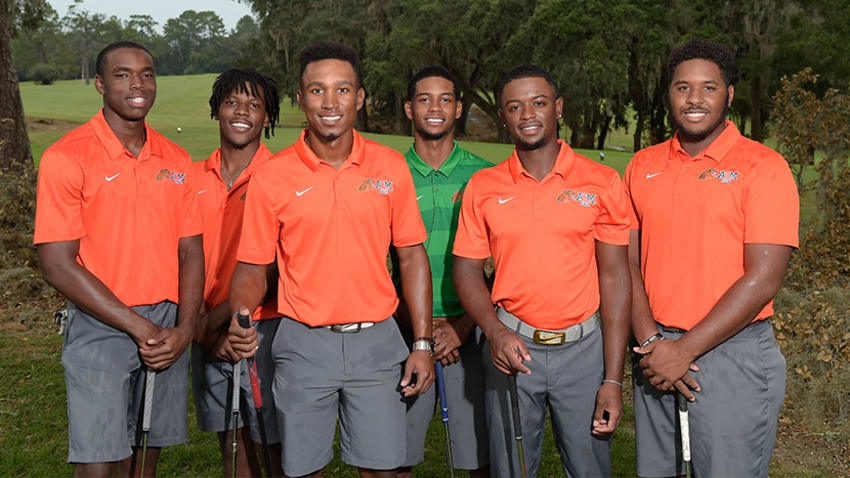TALLAHASSEE, Fla. – An unknown world awaited at the end of his cross-country train ride, but first, a trusted voice imparted words of caution. “I will never forget my mother, just shaking her finger at me,” said Ron Tate. “She told me, ‘Do not go down there and get involved in all those protests.’”
He presents the persona of a man who has experienced so much in his lifetime – from social injustice to hard-earned success – but Tate offers deep respect to those words spoken by his mother more than 50 years ago. “Of course,” he laughs, “five days later I was in jail.”
Born and raised in Minnesota, Tate arrived in Tallahassee, Florida, to attend Florida A&M at a time when the Civil Rights movement, already more than decade old, was building toward what would be the March on Washington in August of 1963. All of it – the segregation, discrimination and disenfranchisement – remains a shameful era in our country’s history, and so, yes, it all felt so wrong to this young man from Minnesota when he arrived at FAMU on a golf scholarship and discovered that the downtown theaters were segregated.
Apologies, mother, but I’m joining the picketing.
Tate was among the 225 arrested, only to have the charges dropped when a judge reached an agreement to new picketing guidelines. Bottom line, his college career was off to a disjointed, though righteous, start.
There is a soft smile, and an unmistakable sense of pride, as Tate recalls the story. But mostly, it’s his way of saying that he has a perspective that helps him measure a nation’s growth.
It has a way to go, he said, but as he stood on the putting green at Capital City Country Club, he was warmed by what he saw, a sight that told him things have changed exponentially for the better. Six African-American young man – Mulbe Dillard, Ethan Mangum, Cameron Riley, Prince Cunningham, Chase Killette and Isaiah Shaw – resplendent in their orange team pullovers and shirts, and punctual for a practice session, strolled to the back of the clubhouse to meet their coach, Preston Rice, and be introduced to this man who proudly wore the FAMU uniform more than 50 years ago.
“He’s a great man and a loyal supporter of our program,” Rice said of Tate, who shook hands with each of the six young men.
There were pleasantries and a few questions, but there was also a practice to get to, so Tate bid the players a good day and watched them move onward. “I would love to have lunch with them, though, to talk with them, but I guess I couldn’t pay for it or it would be an NCAA violation,” said Tate, who has supported the golf team in a quiet fashion at his alma mater for years. His reason is simple, rooted deep into what ignited his golf passion as a kid and still pushes him at his age – “I’m in my mid-70s,” he said – to be a mentor.
“Kids today aren’t any different; they want role models and they need role models. All of us want to see others doing something we want to do; they may not be as efficient as others, but we can be inspired by the fact that they are doing it.”
In the beginning, there was a love of golf – a game with stick and ball – and when you’re a kid it is no more complicated than that.
 RELATED ARTICLE: HBCU Golf Teams and Other Programs of Significance to the African American Community
RELATED ARTICLE: HBCU Golf Teams and Other Programs of Significance to the African American Community
“I think I was too young to think about (being the only African-American) in junior golf. I was just going out there to have fun,” said Dillard, who is from Chicago. “It didn’t faze me.”
“When I played, I got a lot of looks,” said Mangum, who was born and raised in Jackson, Mississippi.
“And you got even more when you kept winning everything?” laughed Riley.
Mangum nodded. An accomplished junior who got recruited to play golf at Jackson Academy (current University of Alabama standout Wilson Furr was a classmate), Mangum conceded he stood out as the only African-American competitor in many of his junior tournaments in Mississippi and Louisiana, a situation that only attracted more notice as the wins piled up. “But all the looks made me even more determined to keep playing.”
The looks never bothered Shaw, who grew up in Orlando and remembers the landscape at the 2015 Florida State Golf Association Junior Amateur. “Literally, I think there were two blacks in the tournament,” he said. “But I never worried about being a minority.”
Said Dillard of those days when he looked around junior tournaments in Illinois and didn’t see any other African-Americans: “It was difficult, but I learned to be by myself. Being independent, I feel it helped me grow as a person.”
Cunningham and Killette, both juniors, never would have met without golf and never would have found golf without The First Tee of North Florida in Jacksonville. “I first hit plastic clubs and got hooked and told my father I wanted a set of clubs,” said Cunningham. The dilemma of where to play was solved by The First Tee, which has been integral to each young man’s life.
Cunningham still goes back as a volunteer, while Killette circles as a highlight to his golf career his participation in the PGA TOUR Champions’ PURE Insurance Championship at Pebble Beach where the pros pair with youngsters from the First Tee Program. (Killette played with Larry Mize.)
Like their teammates, Cunningham and Killette found a joy in playing golf and chose to follow that compass. That there wasn’t an abundance of other African-American kids in golf, as there would have been in football or basketball, wasn’t a deterrent, though it clearly is an issue they do not shy away from discussing.
“Not many minorities will have access to golf, (because) it’s too expensive,” said Mangum. “It’s real. I know a lot of children don’t have the opportunity that I had.”
Each young man embraces this topic; in fact, it is part of what galvanizes them as Florida A&M teammates. These are not kids who constantly bumped into one another at AJGA tournaments and planned their golf futures to run through the University of Georgia or Oklahoma State or Alabama or Texas. No, they came from Illinois (Dillard) and Mississippi (Mangum), from Jacksonville (Cunningham and Killette) and Orlando (Shaw) and even from the islands (Riley), and when they chose Florida A&M, by happenstance it was as if an instant brotherhood was formed. African-American golfers at Florida A&M, the fifth-largest historically black university in the country, united by the challenges they all faced just to find their way into golf.
Read more by Jim McCabe at PGATOUR.COM




